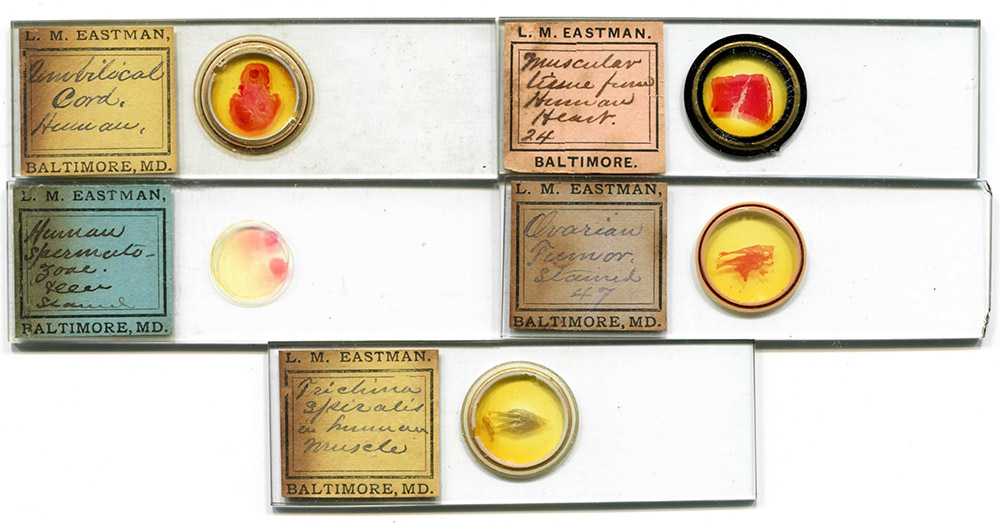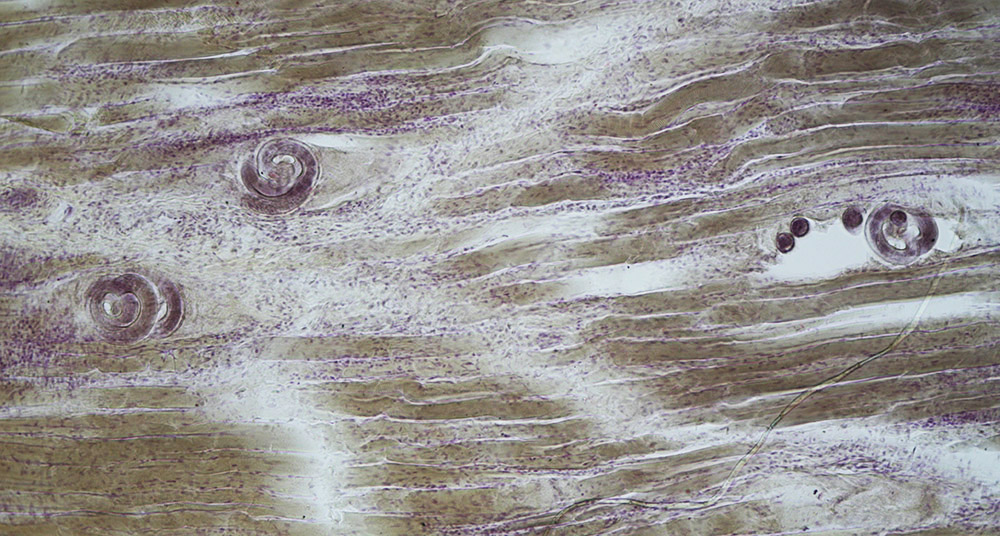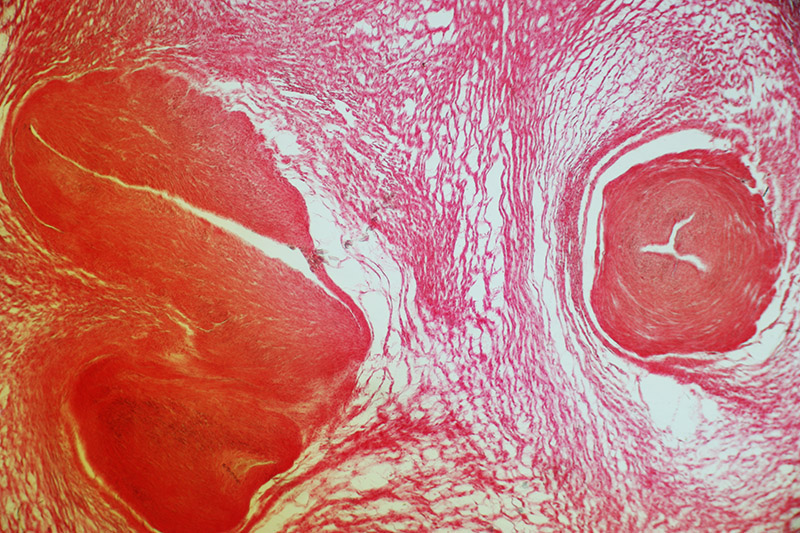
Figure 1. Microscope slides by L.M. Eastman, probably ca. 1880-1891. From the author's collection, or adapted for nonprofit, educational purposes from internet sale sites.
Lewis Matchen Eastman, 1836 - 1901
by Brian Stevenson
last updated July, 2020
L.M. Eastman appears to have begun serious amateur microscopical studies in about 1880. A medical doctor in Baltimore, Maryland, he specialized in preparing human and animal anatomical and pathological specimens. Through exchanges, and probably purchases, he quickly amassed a substantial collection of microscope slides. In 1883, Thaddeus Up de Graf wrote, “Baltimore boasts of two institutions for the visitations of scientists - Johns Hopkins University, the best equipped institution for biological research in this country, and Dr. Eastman's cabinet of microscopic objects - the finest and largest in the world”.

Figure 1.
Microscope slides by L.M. Eastman, probably ca. 1880-1891. From the author's collection, or adapted for nonprofit, educational purposes from internet sale sites.

Figure 2.
Cysts of Trichina spiralis in human muscle, prepared by Lewis Eastman (see Figure 1). Photographed with a 10x objective lens and C-mounted digital SLR camera.
Lewis Eastman was born on July 17, 1836, in Baltimore. His mother, Adeline, died in 1844, when Lewis was 8 years old. The 1860 national census listed Lewis, his 61 year-old father, Jonathan, and 16 year-old brother living with Adeline’s relatives. Jonathan Eastman was not noted to have a job.
Lewis was able to attend college, graduating from the University of Maryland College of Medicine in 1859. He initially went into practice as a dentist.
The US Civil War broke out in April, 1861. Eastman volunteered for the US Army Medical Corps that July, and was officially appointed as an Assistant Surgeon in August, 1861. He served in West Virginia until August, 1862, when he was captured by Confederate troops. He was released soon afterward, and assigned to hospital duty in Baltimore. From December, 1862 until January, 1863, he served with the 1st Cavalry Division of the Army of the Potomac. Eastman was discharged in January, 1863, whereupon he took up medical practice in Baltimore.
In September, 1862, while assigned to Baltimore, Lewis Eastman married Mary Ann Gormley. They had six children. The first, Lewis Alvin Eastman, died when only 7 months old. The other two boys, one of whom was also named Lewis, followed their father’s footsteps into medical fields.
The 1870 census states that Eastman had an estate valued at $20,000, which was a considerable amount of money in those days. The Eastmans employed a nurse for their daughters, aged 3 and 1. Lewis had a coachman, probably to drive him on his medical rounds.
I found records of Lewis Eastman applying for passports in 1871, 1875, and 1884. Those applications gave descriptions of Eastman: 5 feet 9 inches tall, with blue eyes. In 1871, when 34 years old, he already had “mixed gray” hair. He had a “bold” forehead, “full” face, “round” chin, and “small” mouth. In 1884, he had a full beard and moustache. None of the passport applications stated where he was bound, but in 1875 and 1884 he took young daughters with him.
Lewis Eastman probably learned the value of microscopy during his medical training. He was a driving force in the establishment of the Baltimore Microscopical Society in 1881. The American Monthly Microscopical Journal wrote in 1881, “This Society was organized on the 23d of March. A most interesting reception was held at the rooms of the Maryland Academy of Science, on Tuesday evening, May 17th. The hall was crowded. The display was novel for Baltimore, being the first that has ever been attempted there. There were on exhibition about fifty instruments, and each exhibitor showed numerous objects … Dr. Louis M. Eastman showed a cancer of the breast, also trichina in human muscle and in pork”.
Throughout 1881, Eastman published numerous offers to exchange his “histological and pathological slides” with other mounters (Figure XX).
Eastman attended the 1882 meeting of the American Society of Microscopists, and was elected to membership.
By 1883, Eastman had established “a magnificent cabinet” of slides. Thaddeus Up de Graf wrote, “Dr. Lewis M. Eastman, of Baltimore, President of the Baltimore Microscopical Society, and known throughout the civilized world as a distinguished mounter of microscopic objects, possesses the largest cabinet in microscopy in the United States, if not in the world. Not only is his cabinet noted for its great extent, but also for the fineness of the collection. It is very full and complete in the departments of histology, pathology, microscopic botany and fungi, diatomaceae algae, mineralogy, etc. His coal preparations are wonderfully fine, showing their vegetable cells in cross and longitudinal section, almost as distinctly as in a freshly mounted vegetable section. His double and simple stained vegetable and animal sections are marvels of neatness, surpassing any that we have heretofore seen. An entire week could easily be spent in looking at his collection of diatoms, alone; and such diatoms! Diatoms from all parts of the earth, selected and arranged slides, which, for cleanliness and beauty of arrangement, would make a diatomaniac wild with joy. We spent an entire afternoon looking at arranged diatoms without exhausting that department. Baltimore boasts of two institutions for the visitations of scientists - Johns Hopkins University, the best equipped institution for biological research in this country, and Dr. Eastman's cabinet of microscopic objects - the finest and largest in the world”.
In 1883, “The Baltimore Microscopical Society held its third annual reception at Lehman's Hall on the 23rd ulto. This society has upwards of 100 active members and has the nucleus for a library and cabinet. Dr. Lewis M. Eastman is President, and Dr. E.M. Schaeffer, Reporting Secretary”.
Also in 1883, Lewis Eastman was appointed Professor of Microscopy in the “Baltimore Medical College” (i.e. University of Maryland).
The American Monthly Microscopical Journal wrote in 1884, “The Baltimore Microscopical Society seems to be in a flourishing condition. Its meetings are now held at the Johns Hopkins University, and Dr. Councilman has been elected president for the current year. Among the members are a number of well-known microscopists, Dr. G.M. Sternberg, who is conducting his researches in the university laboratory, Dr. L.M. Eastman, whose extensive cabinet of slides is already famous, and others of whom we shall doubtless hear from time to time through their contributions to these pages”.
Eastman presented at least two medically-oriented papers at meetings of the American Society of Microscopists, “Egg-like bodies in the liver of the rabbit” (on his observations of parasite eggs, 1883) and “Some remarks on fat-infiltration of the liver” (1885).
At an 1887 meeting of the Baltimore Microscopical Society, “Dr. Lewis M. Eastman referred to a diatom slide prepared by Sir John Kinker of Amsterdam, and recently sent to him by that scientist. It represents in an arranged manner, one of each variety of diatom found in the Monterey Earth. He thought that such slides coming from such a distinguished worker, were of great value to the scientist, and of marvelous beauty to all”.
References to Lewis Eastman’s involvement in microscopy fade after 1891, suggesting that he may have reduced his activity in that hobby.
He died on June 27, 1901, at the age of 63.

Figure 3.
An 1881 exchange offer from Lewis Eastman.

Figure 4.
Cross-section of a human umbilical cord, prepared by Lewis Eastman (see Figure 1). Photographed with a 3.5x objective lens and C-mounted digital SLR camera.
Resources
The American Journal of Microscopy and Popular Science (1881) Exchange offers from Lewis M. Eastman, pages 88, 108, 128, 148, 168, and 208
The American Monthly Microscopical Journal (1881) Microscopical societies, Vol. 2, pages 139-140
The American Monthly Microscopical Journal (1882) Exchange offers from Lewis M. Eastman, Vol. 3, page 140
The American Monthly Microscopical Journal (1884) Baltimore Microscopical Society, Vol. 5, page 219
Bracegirdle, Brian (1998) Microscopical Mounts and Mounters, Quekett Microscopical Club, London, pages 34 and 132, and Plate 14-R
Eastman, Lewis M. (1883) Egg-like bodies in the liver of the rabbit, Proceedings of the American Society of Microscopists, pages 167-168
Eastman, Lewis M. (1883) Some remarks on fat-infiltration of the liver, Proceedings of the American Society of Microscopists, pages 60-61
Henry, Guy V. (1869) “Lewis M. Eastman, [Born in Maryland.- Appointed from Maryland.] Military History. - Acting Assistant Surgeon U. S. Army, in General McClellan's command in West Virginia, July, 1861. Assistant Surgeon U. S. Army, August, 1861. Hospital duty in West Virginia, to May, 1862. With the Army of the Mountain Department of West Virginia, June, 1862. Taken prisoner, and in the hands of the rebels, to August, 1862. In the office of the Medical Director, Baltimore, Md., to October, 1862. Charge of General Hospital, to December, 1862. With the 1st U. S. Cavalry, Army of the Potomac, to January, 1863. Resigned, January, 1863”, Carleton, New York, page 71
Maryland Medical Journal (1883) Baltimore Microscopical Society, Vol. 10, page 80
The Microscope (1887) Baltimore Microscopical Society, Vol. 7, pages 359-360
New York Medical Journal (1883) The Baltimore Medical College, page 28
Old Maryland (1909) Dr. Howard Eastman, Vol. 4, page 87
Proceedings of the American Society of Microscopists (1882) page 9
University of Maryland School of Medicine Catalog (1895) Alumni Association
Up de Graf, T.S. (1883) A magnificent cabinet, The Microscope, Vol. 3, page 133
US census and other records, accessed through ancestry.com